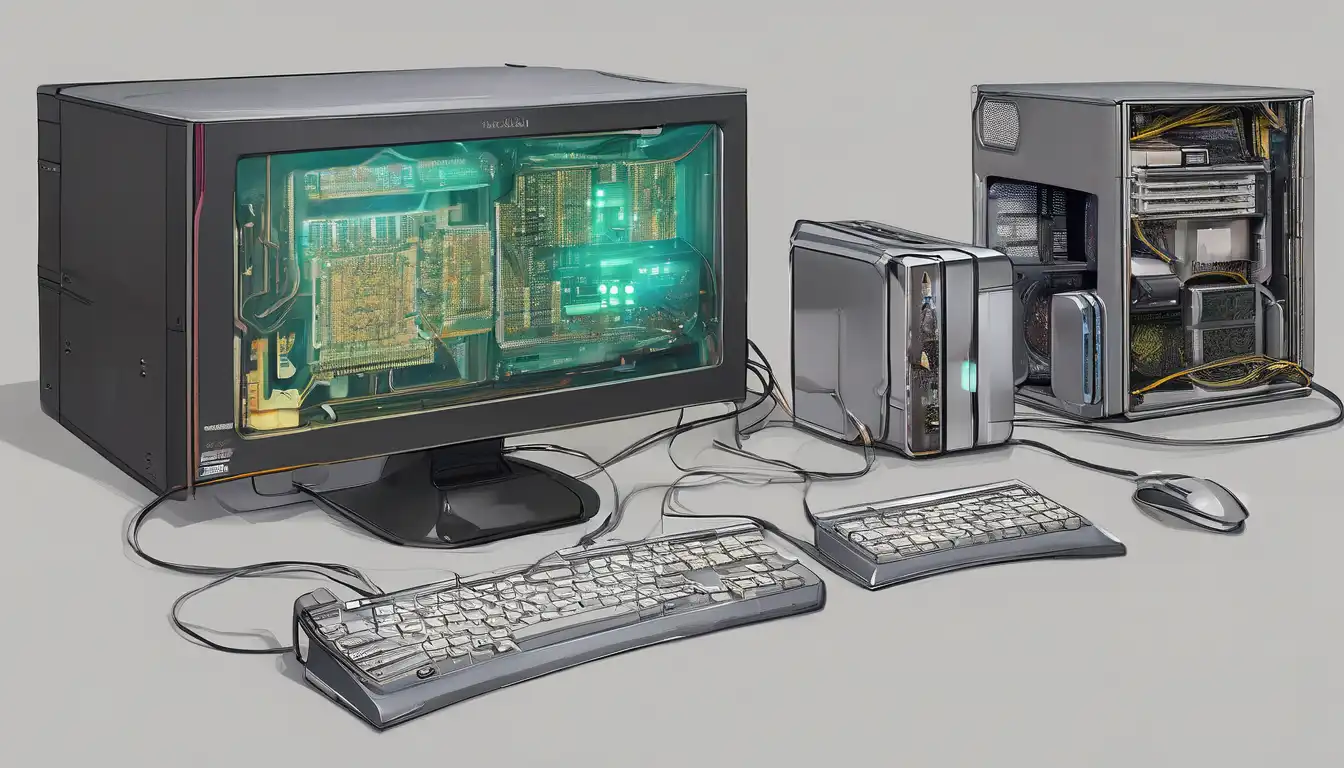Revolutionary Advances in Computer Hardware Technology
The world of computer hardware is undergoing unprecedented transformation, with innovations emerging at an astonishing pace. From quantum computing breakthroughs to AI-optimized processors, the landscape of modern computing is being reshaped by cutting-edge technologies that promise to redefine performance, efficiency, and capabilities. These advancements are not just incremental improvements but represent fundamental shifts in how we approach computing hardware design and implementation.
Next-Generation Processor Architectures
Processor technology has evolved beyond traditional Moore's Law limitations, with manufacturers developing innovative approaches to boost performance. The latest CPUs feature heterogeneous architectures that combine high-performance cores with efficiency cores, optimizing power consumption while maintaining exceptional computing capabilities. Companies like Intel and AMD are pushing boundaries with 3D stacking technology, where multiple layers of transistors are vertically integrated, dramatically increasing transistor density without expanding the physical footprint.
Quantum computing represents perhaps the most revolutionary development in processor technology. While still in early stages, quantum processors are demonstrating capabilities that could solve complex problems intractable for classical computers. Major tech companies are investing heavily in quantum hardware research, with prototypes already showing promise in fields like cryptography, drug discovery, and complex system simulations.
Advanced Memory and Storage Solutions
The memory hierarchy is experiencing significant innovation, with new technologies bridging the gap between traditional RAM and storage. Storage-class memory (SCM) technologies like Intel's Optane are creating new possibilities for persistent memory that operates at speeds approaching traditional RAM while maintaining data persistence. This breakthrough enables new computing paradigms where massive datasets can be processed without the traditional storage bottlenecks.
Solid-state drive technology continues to evolve rapidly, with PCIe 5.0 SSDs delivering unprecedented read/write speeds exceeding 10,000 MB/s. The adoption of QLC (Quad-Level Cell) NAND flash has increased storage densities while maintaining reasonable endurance, making high-capacity SSDs more accessible. Meanwhile, emerging technologies like computational storage are integrating processing capabilities directly into storage devices, offloading compute tasks from the main CPU.
Graphics Processing Unit Innovations
GPUs have transcended their original purpose of rendering graphics to become essential components for AI, machine learning, and scientific computing. The latest GPU architectures feature dedicated AI accelerators, ray tracing cores, and tensor cores optimized for specific computational workloads. NVIDIA's Hopper architecture and AMD's CDNA architecture represent significant leaps in parallel processing capabilities, enabling complex simulations and AI model training at unprecedented scales.
Integrated graphics have also seen remarkable improvements, with modern iGPUs capable of handling 4K video playback and light gaming without discrete graphics cards. This advancement is particularly important for mobile devices and compact computing systems where space and power constraints limit discrete GPU options.
Networking and Connectivity Breakthroughs
Hardware networking technology is keeping pace with increasing bandwidth demands. Wi-Fi 7 technology promises theoretical speeds up to 46 Gbps, while 5G integration in computing devices enables new mobile computing paradigms. Ethernet technology has advanced to 400GbE standards, crucial for data centers and high-performance computing environments where massive data transfers occur continuously.
Thunderbolt 4 and USB4 standards have unified connectivity options, providing up to 40 Gbps transfer speeds while supporting multiple protocols over a single cable. These advancements simplify peripheral connectivity while maintaining high performance standards essential for modern workflows.
Cooling and Power Management Innovations
As component densities increase, thermal management becomes increasingly critical. Advanced cooling solutions including vapor chamber designs, liquid cooling systems, and phase-change materials are becoming more prevalent in high-performance systems. These technologies enable sustained high-performance operation without thermal throttling, essential for applications requiring consistent computational power.
Power efficiency has become a primary design consideration across all hardware categories. Modern components feature sophisticated power management systems that dynamically adjust voltage and clock speeds based on workload demands. This approach maximizes performance when needed while minimizing power consumption during lighter usage, extending battery life in mobile devices and reducing energy costs in stationary systems.
Emerging Hardware Security Features
Hardware-level security has gained prominence with the increasing sophistication of cyber threats. Modern processors incorporate dedicated security engines, memory encryption capabilities, and hardware-based root of trust implementations. These features provide foundational security that's resistant to software-based attacks, protecting sensitive data and system integrity at the hardware level.
Quantum-resistant cryptography hardware is also in development, anticipating future threats from quantum computing. These specialized components will ensure data security remains robust even as computing capabilities advance into the quantum realm.
The Future of Computer Hardware
The trajectory of hardware innovation points toward increasingly specialized components optimized for specific workloads. We're seeing the emergence of domain-specific architectures where hardware is tailored for particular applications like AI inference, scientific computing, or real-time data processing. This specialization promises significant performance gains while potentially reducing power consumption for targeted use cases.
Neuromorphic computing represents another frontier, with hardware designed to mimic the neural structure of the human brain. These systems promise exceptional efficiency for pattern recognition and AI tasks, potentially revolutionizing how we approach computing problems that are challenging for traditional von Neumann architectures.
As hardware technology continues to evolve, the boundaries between different component categories are blurring. System-on-chip designs integrate traditionally separate components into unified packages, while chiplets architectures allow mixing and matching specialized silicon dies to create customized computing solutions. These approaches offer new flexibility in hardware design while potentially reducing development costs and time-to-market for new technologies.
The latest innovations in computer hardware technology are not just making computers faster—they're enabling entirely new computing paradigms. From AI-optimized architectures to quantum computing breakthroughs, these advancements are laying the foundation for the next generation of computational capabilities that will drive innovation across all sectors of technology and society.
